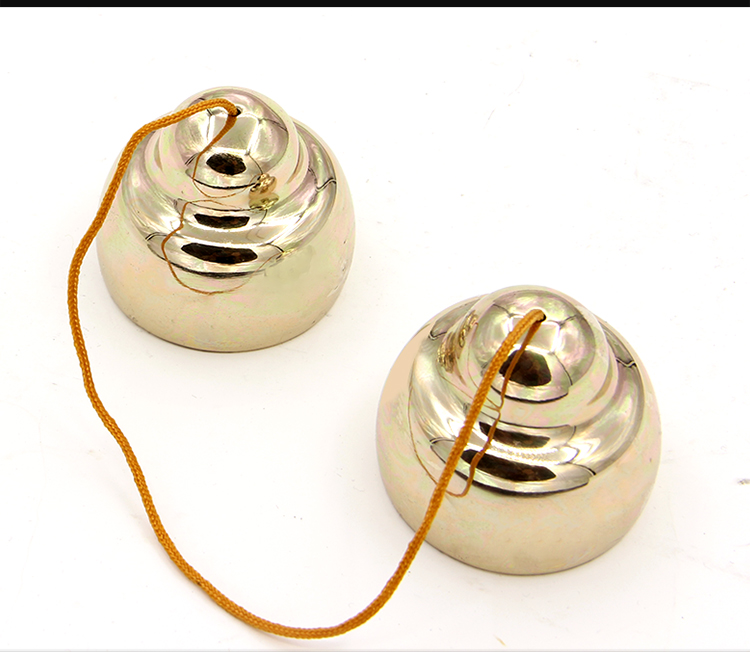The development and history of the bell
In the 25th year of Qianlong's reign (1760), it was used for Kaige music in the Qing Dynasty. Made of brass or brass, it has a small bell-shaped appearance, which can be regarded as a deformation of the cymbal. Cast with hard mold, there are two kinds of hemispherical and conical. Usually the height of the bell is 4.5 cm to 6 cm, the diameter of the bell mouth is 5.5 cm to 7 cm, it is hollow and tongueless, and the top of the bell is raised hemispherical as a fixed point, called a bowl or hat, and the diameter of the bowl is 3 cm. Tibetan Dingxia has a larger size, with a bell height of 6 cm to 8 cm and a diameter of 7 cm to 8 cm at the mouth of the bell. There are small holes drilled on the top of the bowl, and two bells are a pair, and the two bells are connected with silk ropes or leather ropes. The bell made of brass has a longer duration of pronunciation; the bell made of brass has a slightly shorter duration of pronunciation.

Cymbals appeared in the Northern and Southern Dynasties. "Sui Shu Music Records": "Tianzhu people originated from Zhang Chonghua's possession of Liangzhou (346-354), and Chongsi translated it to pay tribute to male performers, and Tianzhu was the music. The musical instruments have... copper cymbals." Six At the beginning of the century, cymbals were very popular among the people. In the Book of Northern Qi, Shenwu Ji, there is a record of "Luoxia attacked each other with two draws" when Emperor Xiaoming of the Northern Wei Dynasty (516-528). There are five cymbals used in the nine music of the Sui Dynasty, and seven cymbals used in the ten music of the Tang Dynasty. "Old Tang Book Music Records": "Tongba, also known as copper plate, comes out of Xixu and Nanman. Its circle is several inches, and it is hidden like a floating rut, and it is permeated by Weipi, and it strikes each other for harmony."
In 1965, a pair of Yuan Dynasty copper cymbals were unearthed in the suburbs of Shenyang, Liaoning, with a diameter of 19.5 cm. Along with this cymbal, there is a golden drum with inscriptions inscribed in the fourth year of the Yuan Dynasty (1344). The cymbal is made of sound copper and is in the shape of a disc. The central hemispherical part is called the bowl or cap, and the part from the root of the bowl to the edge of the cymbal is called the hall. The top of the bowl is drilled, and leather ropes, silk or cloth strips are threaded so that it can be held with both hands. When playing, hold one side of each hand and strike each other. There are light strikes, heavy strikes, grinding strikes, and punching techniques. It is used in folk instrumental ensembles, local operas, singing and dancing accompaniment and gongs and drums. There is also a single click sound. Use a small cymbal to strike the edge of a single cymbal to obtain its special sound effect, which is used for the accompaniment of national bands and rap.
For example, "Fuzhou Pinghua" is popular in Fujian Fuzhou, Minhou, Yongtai, Lianjiang, Minqing and other places. Ready to use a single cymbal accompaniment. The singer holds a cymbal in his right hand and a porcelain ring on his thumb, which can hit the edge of the cymbal to make a sound, and hold a small stick in his left to tap it to rap. The popular Sichuan song "Lotus Leaf" is also accompanied by a single cymbal.
 渝公网安备 50010702504639号
渝公网安备 50010702504639号